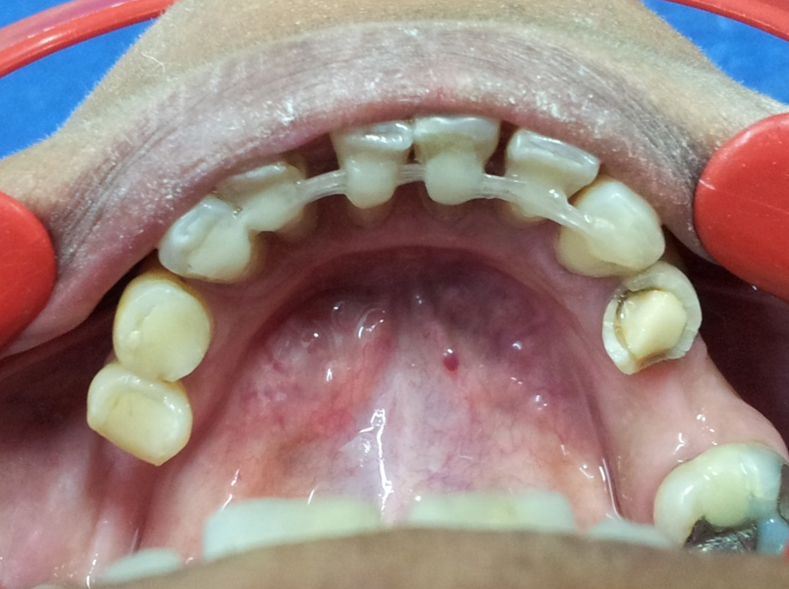Teeth Splinting
Teeth Splinting
Teeth splinting, periodontal splinting, and periodontal ligament fiber lingual splinting are dental procedures and techniques used to stabilize and support teeth, especially when they are loose or have mobility due to various dental conditions. Here’s an overview of each of these terms:

Teeth Splinting
Teeth splinting is a dental procedure where two or more teeth are connected or “splinted” together to provide additional stability. This is typically done when one or more teeth are loose due to trauma, periodontal (gum) disease, or other factors. Periodontal disease damages the supporting structures of the teeth, including the periodontal ligament and surrounding bone. Splinting can help stabilize loose teeth and promote their healing by reducing the stress on the affected teeth. It is often used in combination with other periodontal treatments like scaling and root planing to manage gum disease.
The procedure involves bonding the teeth together with dental materials such as wires, brackets, or resin to immobilize them temporarily. This helps distribute forces during chewing and allows the teeth to heal and reattach to the supporting structures. Splinting can be either temporary or permanent, depending on the underlying condition.
Periodontal Ligament Fiber Lingual Splinting
This term refers to a specific technique of teeth splinting that utilizes the lingual (tongue-side) surfaces of the teeth and the periodontal ligament fibers. The periodontal ligament is a bundle of connective tissue fibers that attach the tooth to the surrounding bone. Lingual splinting involves bonding a wire or other material to the lingual surfaces of the teeth, utilizing the periodontal ligament fibers to stabilize and support the teeth. This technique is particularly useful for anterior (front) teeth that are mobile and need additional support.
These procedures are typically performed by a dentist or periodontist (a specialist in gum and periodontal diseases) and are used to address tooth mobility or instability due to various dental issues. The choice of splinting method and whether it’s temporary or permanent depends on the specific condition of the patient’s teeth and the goals of treatment.

Need an Emergency Help?
Call Us!
Testimonials
What people say about Us.

Mr. and Mrs.Bagla
They are dentists with good skill and talent…soft spoken and well behaved..

Vipin Netriwal
I was dealing with a dental surgical complication from my previous dentist since last 3-4 months for which I consulted so many doctors. A friend of mine suggested me to consult Dr. Gaurav Shah and after getting the treated by Dr. Gaurav Shah, my problem vanished in 15 days. It is also pertinent to mention here that both the husband and wife (Dr. Gaurav Shah and Dr. Veena Gauri Shah) are very kind hearted, very soft spoken and behave with patient in such a manner that the patient feels relieved of pain. Thanks a lot.

Arun Chordia
My experiences with Dr. Shah have always been extremely pleasant. His professional approach along with top quality service delivery ensures all round dental care.

